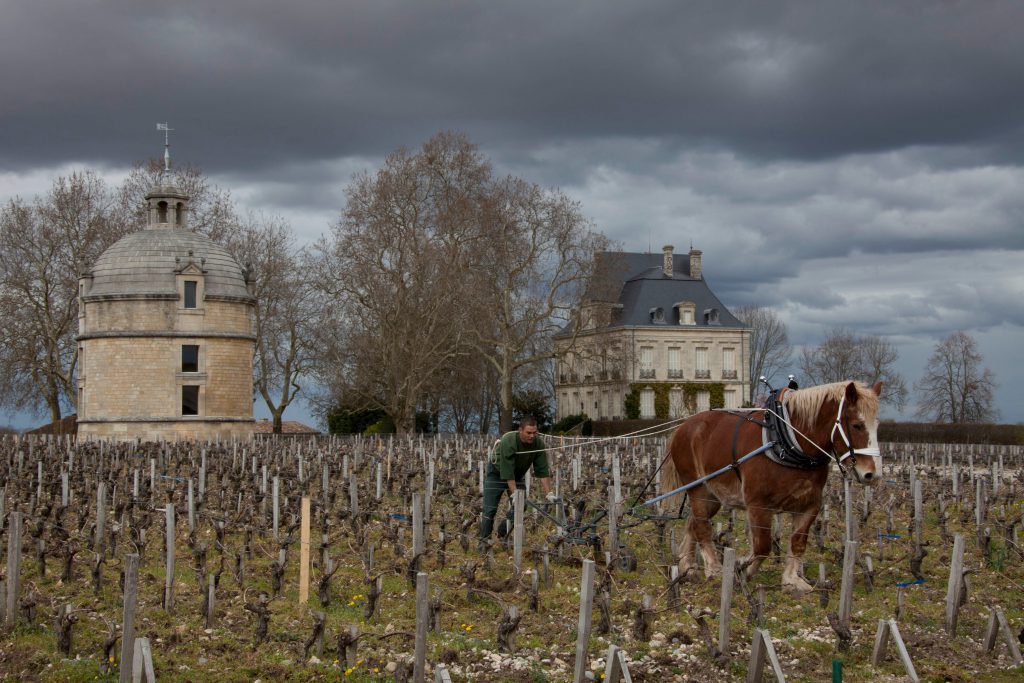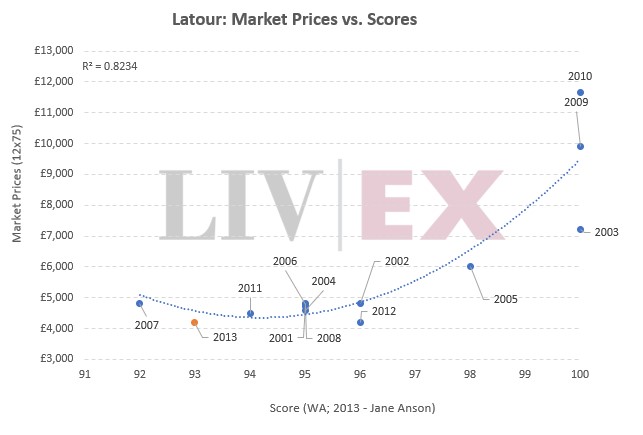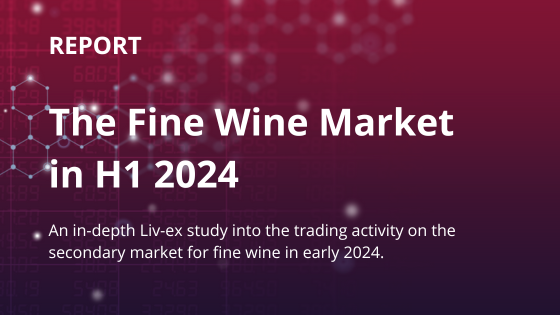
The 2013 vintage of Chateau Latour is due for release this month, the second ‘new’ release from the estate since its withdrawal from en primeur, but how will it be priced?
With few recent scores available and in what is widely seen as one of the weaker post-2000 vintages, at what level will this wine find its market?
Lack of 2012 price movement
Last May the Pauillac First Growth released its 2012 vintage. There was a good deal of interest in this offer as it was the first ‘new’ vintage Latour had released ex-cellar since departing from the en primeur process, having contented itself with re-releases in the interim.
At the time, Liv-ex wrote that a release price of £5,000 would represent ‘fair value’, given its scores from critics,
In the event it was released at £4,200, which certainly represented an “interesting opportunity for buyers”, as Liv-ex said.
Although a welcome surprise at the time, the wine’s market price has not moved since then.
Latour’s trade activity on the market has slumped of late – last year’s activity was the lowest since 2007. This will make the positioning of the 2013 release a game of very fine margins. The situation is compounded by the relative paucity of recent scores.
Not enough scores
When Jane Anson reviewed the wine for Decanter earlier this month, she rated it 93. “One of the wines of the vintage,” she commented, adding that it was “smart of the estate to release this wine now, at eight years old, because 2013 is unquestionably a year that lacks the intensity and structure for long bottle ageing”.
James Suckling rated the wine 94 points in 2016. Apart from that, the only other ratings are from the en primeur barrel tastings in 2014.
Back then, Robert Parker was still writing the Bordeaux reports for the Wine Advocate and gave a bracket of just 88-90, while Antonio Galloni was slightly more generous at 91-93.
Given this, what would be ‘fair value’ for the 2013? Taking the Anson and Suckling scores into account and given the current market price of the lowest-scored Latour (the 2007), there is room to give the 2013 a ‘fair’ market price of over £4,000 per 12×75.

A compelling offer
The problem is the current market price of the 2012. Although Suckling rated that vintage 94 points, the same as the 2013, saying he preferred the structure of the 2011 Latour, this opinion is something of an outlier.
Most reviewers rate the 2012 Latour highly, with Neal Martin considering it one of the best wines of that vintage. And even if, as the tasting notes suggest, the 2013 is a perfectly pleasant, well-made wine from a difficult vintage, it is clearly not as strong as other ‘off’ vintages of Latour.
Since the price of the 2012 has stayed unchanged since its release last May, a price in excess of £4,000 per dozen is unlikely to appear particularly compelling to collectors.
Although there is movement in Bordeaux of late, in part thanks to the lifting of US tariffs, the increased activity is split over multiple regions (Italy, Champagne, the Rhone and US etc). Latour will have to make its offer extremely compelling if it wishes to stand out. Being too bold on price for a vintage that’s generally low rated might prove a challenge for merchants.





